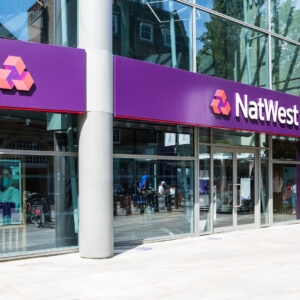
Insight: Direct Debit Plus – how Direct Debit can improve and learn from Open Banking initiatives
OpenBankingExpo | News
03 Dec 2019
Henry Knight, Head of Product and UX at SmartDebit, explores the New Payments Architecture and how it’s empowering consumers.

The New Payments Architecture (NPA) is built around the idea of empowering payers. This is the key driver of the whole initiative: letting payers take control of their payments rather than leaving control with the organisation requesting the money. We can see the genesis of this in Open Banking and Request to Pay where some of the core functionality makes payments interactive. A payment is no longer an ‘instruction’ but a request to the payer from the service provider requiring the payer’s explicit permission and/or a nuanced response: ‘pay half’, ‘pay later’, ‘don’t pay’. Payment recurrence is allowed here, but it’s a world away from the aged though effective fire-and-forget nature of Direct Debit. So what can Direct Debit learn from this new approach? I believe there are several things that can be done by both Direct Debit bureaux and by Bacs.
Direct Debit bureaux, or Payment Service Providers, have traditionally focused on offering a slick user experience to businesses, helping them transact with the highest success rate possible. This value-add is typically achieved with clever abstraction of the various Bacs processing mechanisms, or by automating mundane parts of the collection process. The core focus has always been on empowering businesses to collect reliably, but with the New Payments Architecture (NPA) we’re seeing an attempt to disrupt the traditional payments value chain. If successful, it will create an expectation among payers for more exacting control over their payments, which in turn will become something businesses must compete to offer. This applies as much to traditional Direct Debit bureaux as the newer payment institutions.
In such an environment a bureau must start to think about how it can layer NPA-type interactivity on top of the existing, core Bacs processing model. Almost all bureaux will already offer automation of messaging between businesses and their payers, so that’s the likely starting point for innovation. Bureaux could easily send interactive messages to payers to allow changes in payment dates, or changes in payment amounts or frequency at the choice of the payer. They could even integrate with Open Banking functionality directly and send warnings if they see a payer’s account has insufficient funds near the collection date.
However, we shouldn’t forget that there is something very positive in the existing Direct Debit user experience for a lot of payers. They don’t necessarily want to be reminded of a collection that they are quite comfortable to have automated in the background. Discreet, rather than obtrusive, is of value in itself, particularly in the case of charities who don’t want to disrupt the regular collection of donations.
By offering the kinds of richer interactions we’ve described, bureaux can start to gather the type of ‘Enhanced Data’ that forms another core part of the NPA. So in addition to offering a greater range of user experiences, bureaux can also start to offer greater insights to businesses about all their payers. Business intelligence has traditionally been difficult to craft with the existing Direct Debit model, where metadata has been restricted to things like unique references, transaction statuses and relatively generic reasons for failure. By introducing payer intent and maybe even standardised reasons for transaction failure and deferment, then Direct Debit can begin a feedback loop of payment optimisation and enhance the relationship between business and payer. With regards to data aggregation, there are of course important data protection implications to cross organisation data collection, so it may be left to Bacs to formalise the rules on this.
Where a bureau only has visibility across its own payment estate, Bacs has visibility of transactions across all bureaux, but we cannot see that anything is done with this data. There might be an opportunity to start creating payer-centric services that can be consumed along the same lines as Open Banking’s account aggregation services. On top of this, we’ve yet to see how ISO20022 (the universal financial industry messaging scheme) will be introduced into Bacs payments, which could help harmonise Bacs payments with other payment systems.
One thing that bureaux have little to no control over is transaction times. Bacs is fantastic in terms of its consistency, but this is at the cost of waiting days between payer notification, transaction processing and payment reconciliation. Open Banking is built on Faster Payments, so the notification, transaction and reconciliation typically can happen all within the same day. Bacs must find a way to reduce the lag. Open Banking type APIs may be the answer here.
There is plenty of time to implement changes. There’s a long way to go with the NPA’s disruption of the payments space and plenty of moving parts, but it offers a framework for challenging traditional approaches. I’ve suggested several ways in which Direct Debit can challenge its own traditions and attempt to innovate along similar lines to the NPA, placing greater focus on payers without losing its fundamental convenience: interactive messaging to payers, enhanced data, opening that data up for wider consumption and reduced processing times. In this way Direct Debit can continue to offer world class, reliable and discreet payment processing with all the expected additional value of offering payers more control, businesses greater insight and to both a quicker service.








